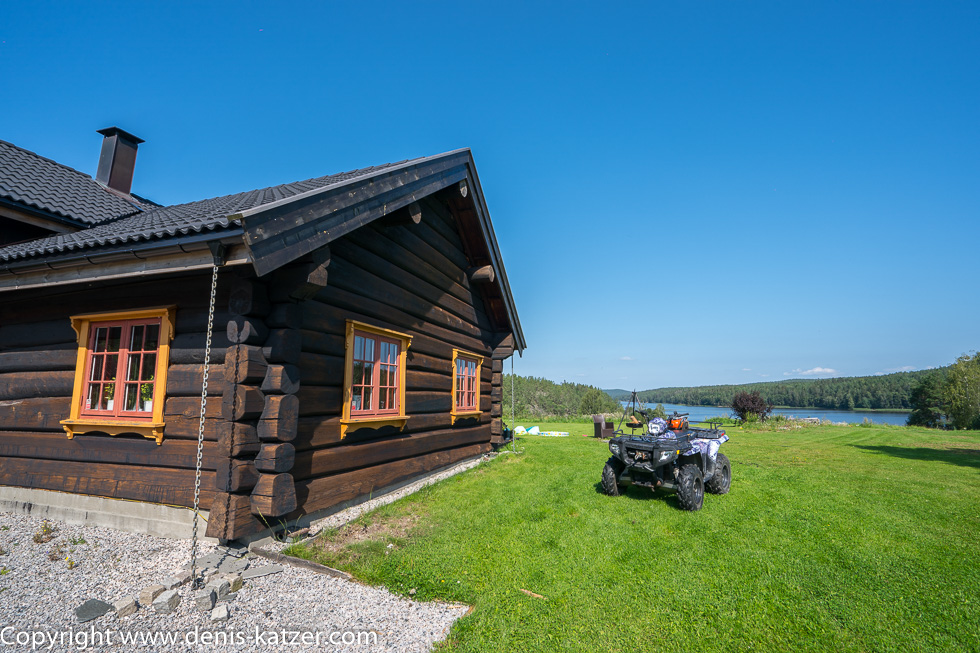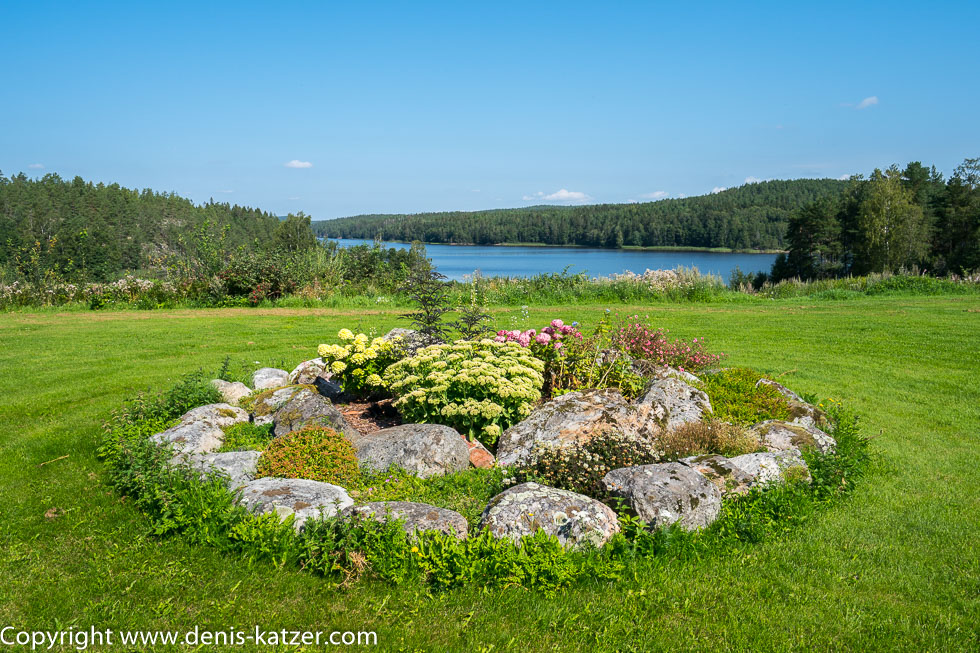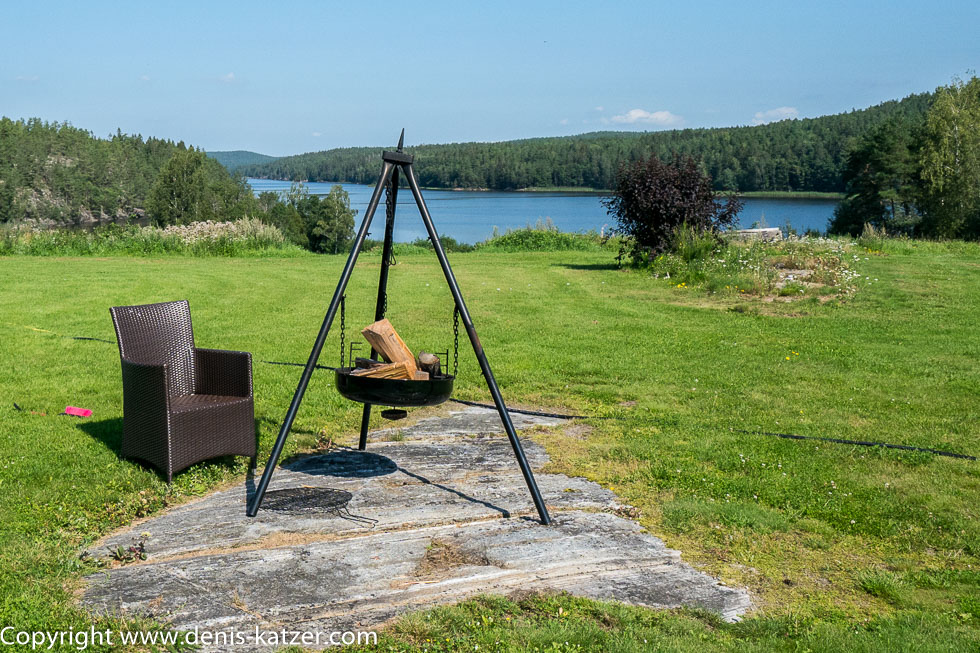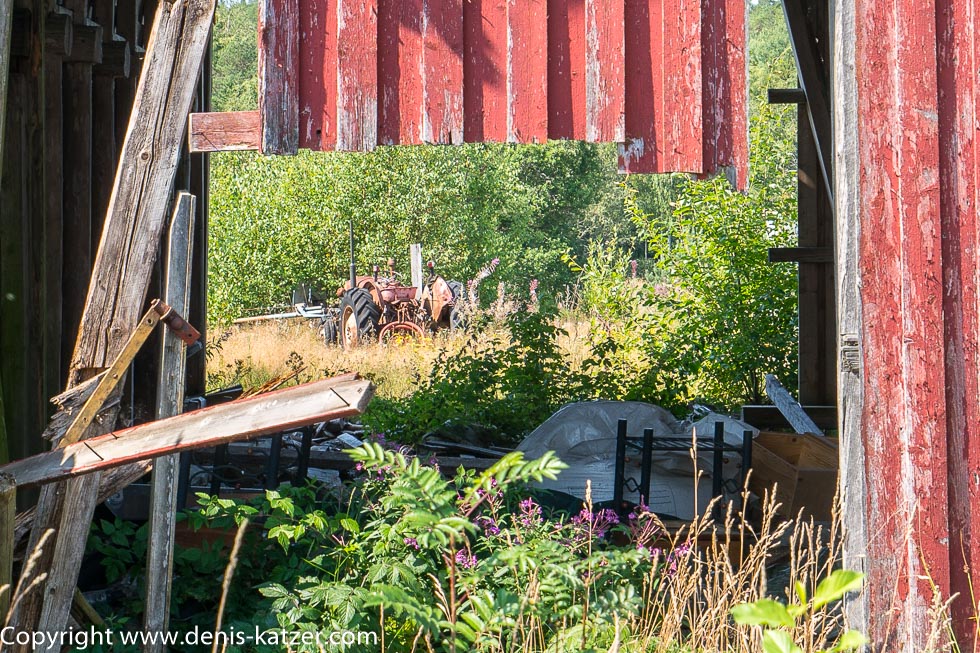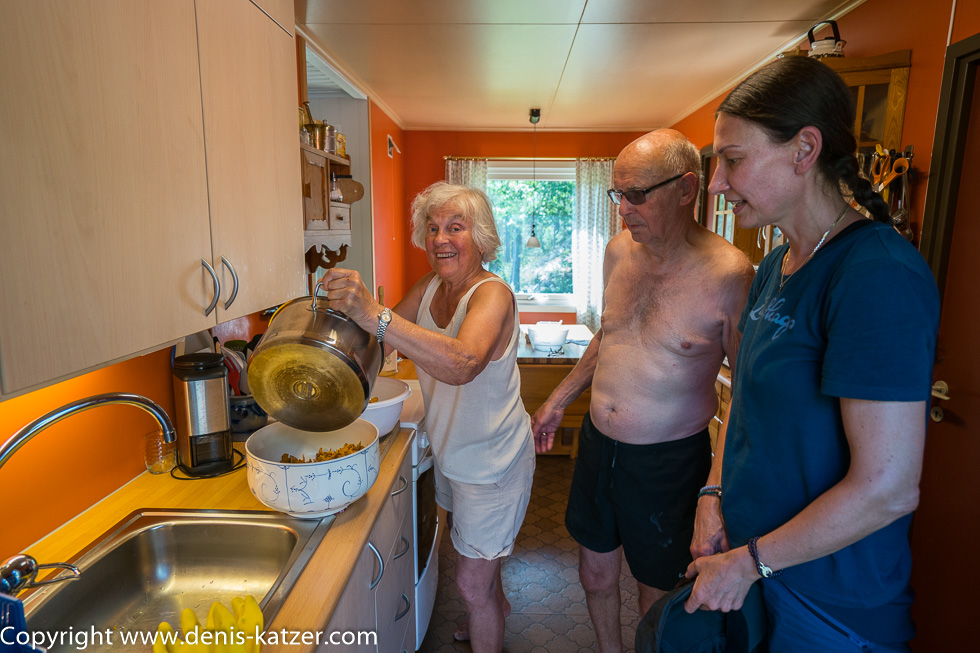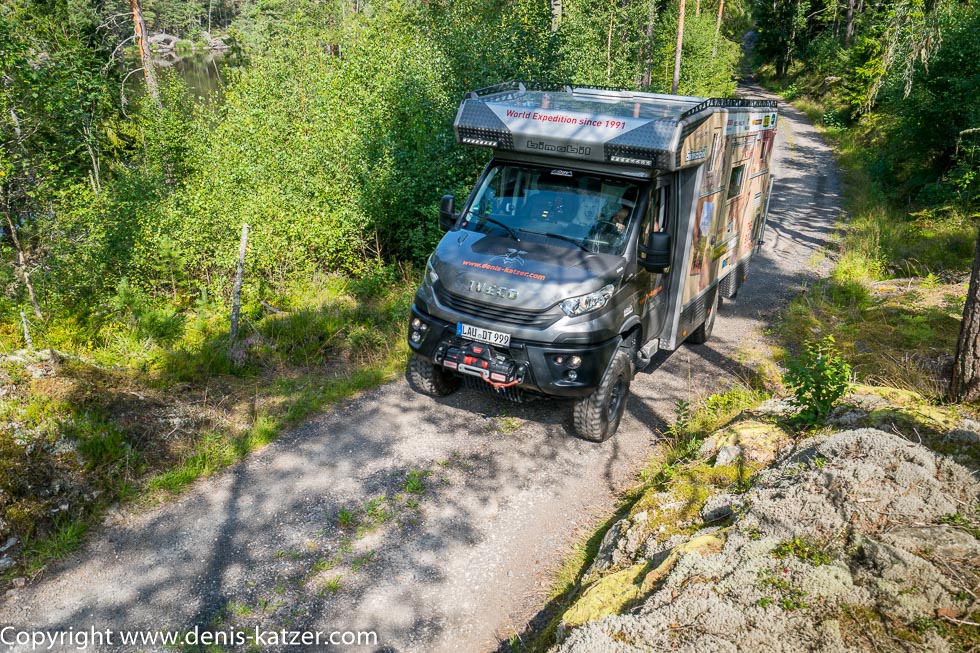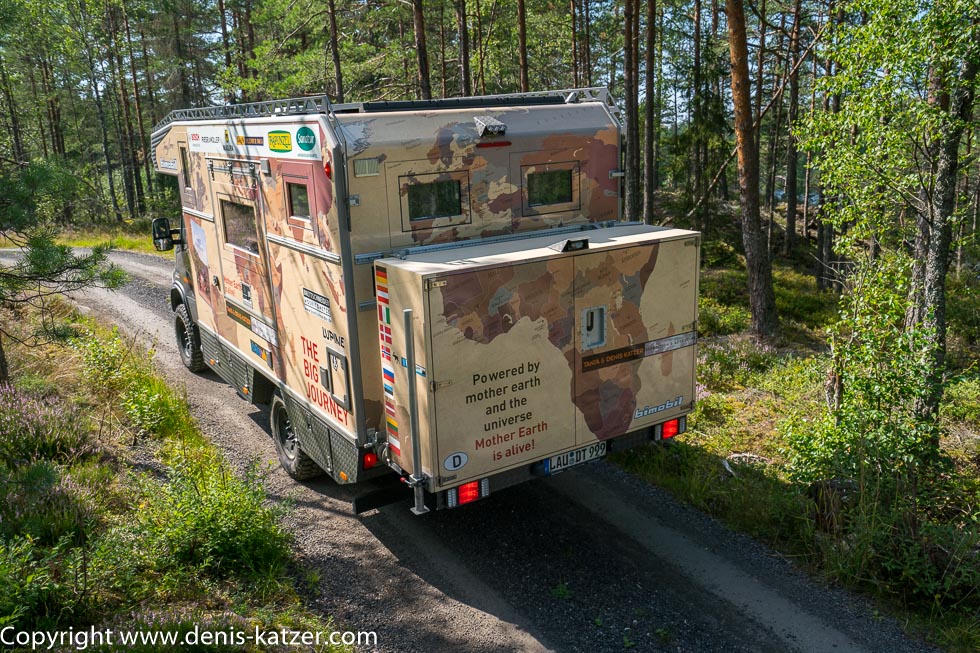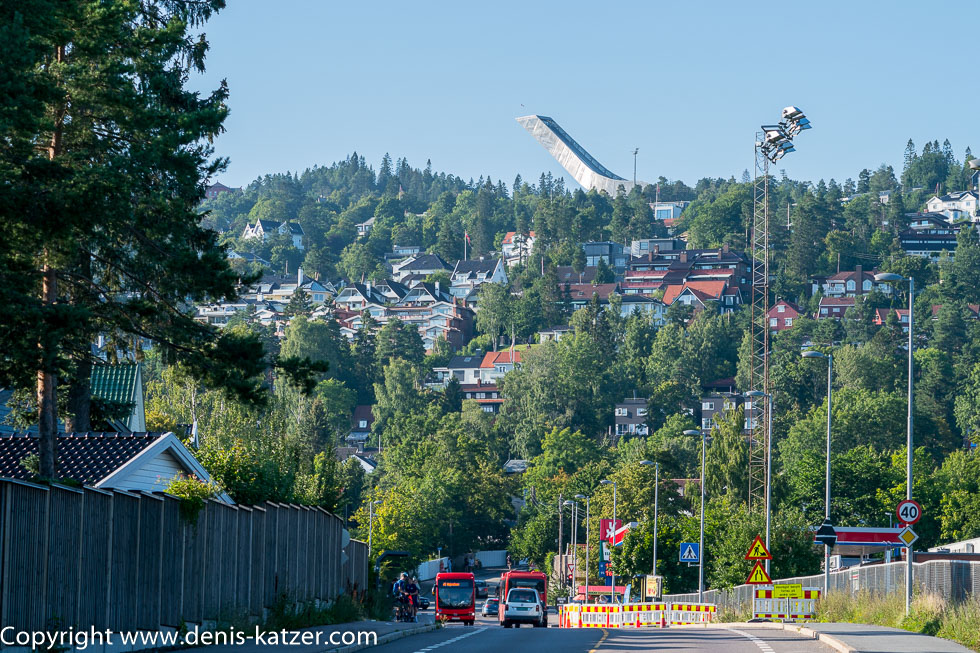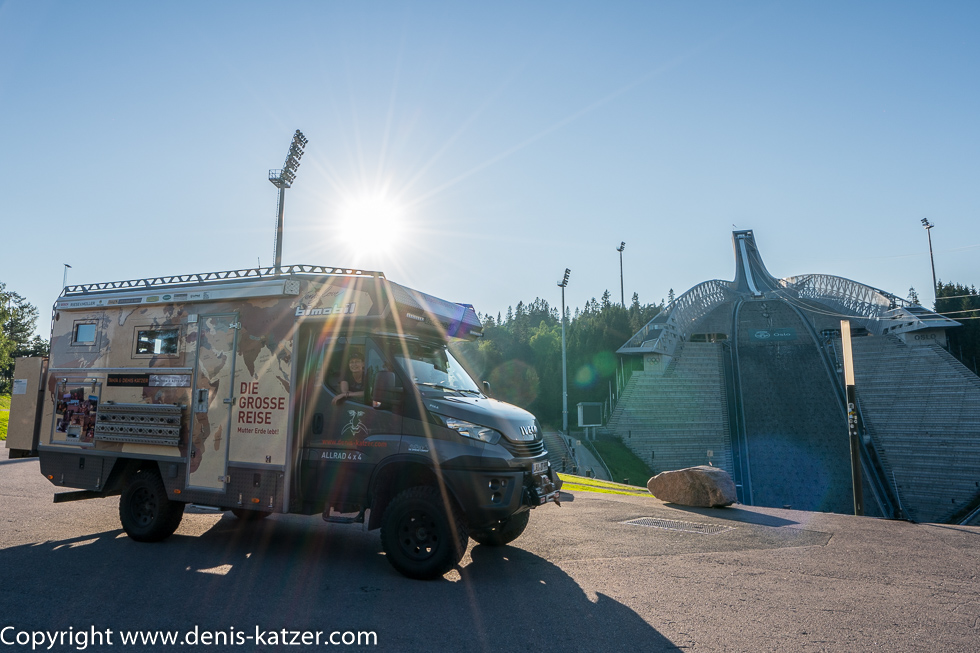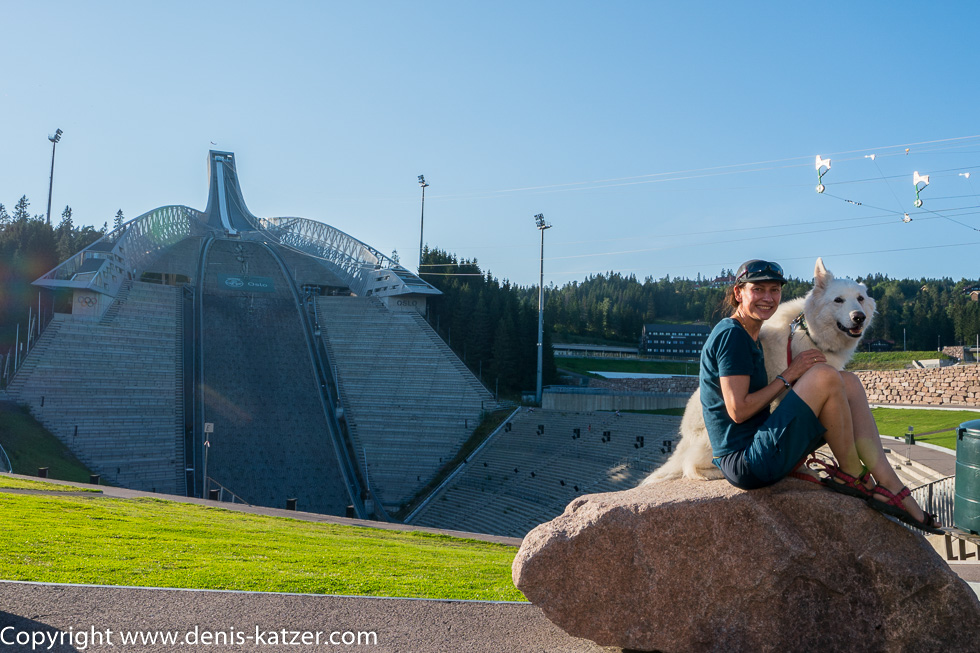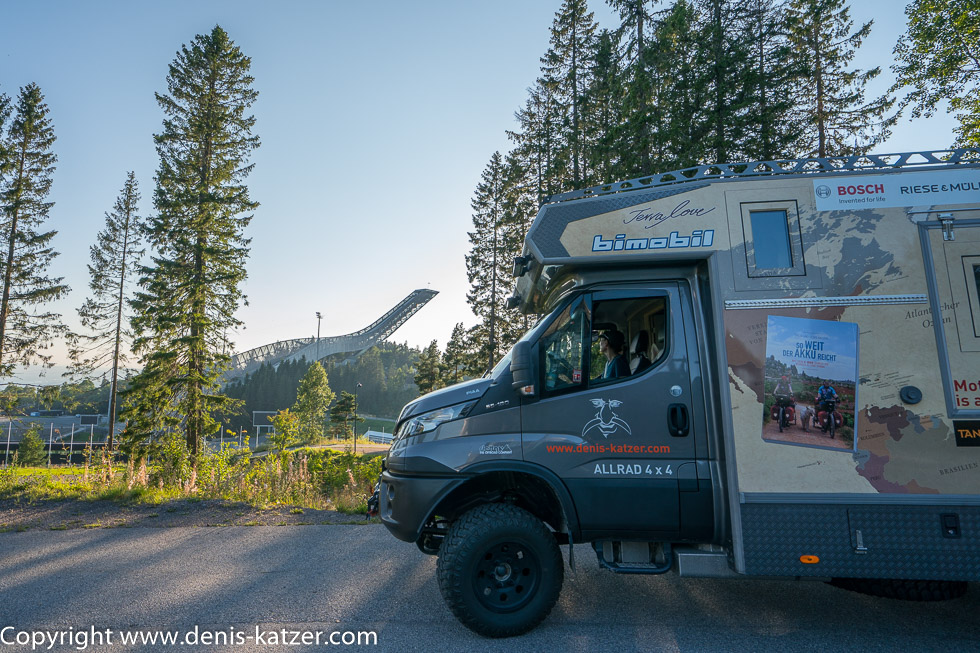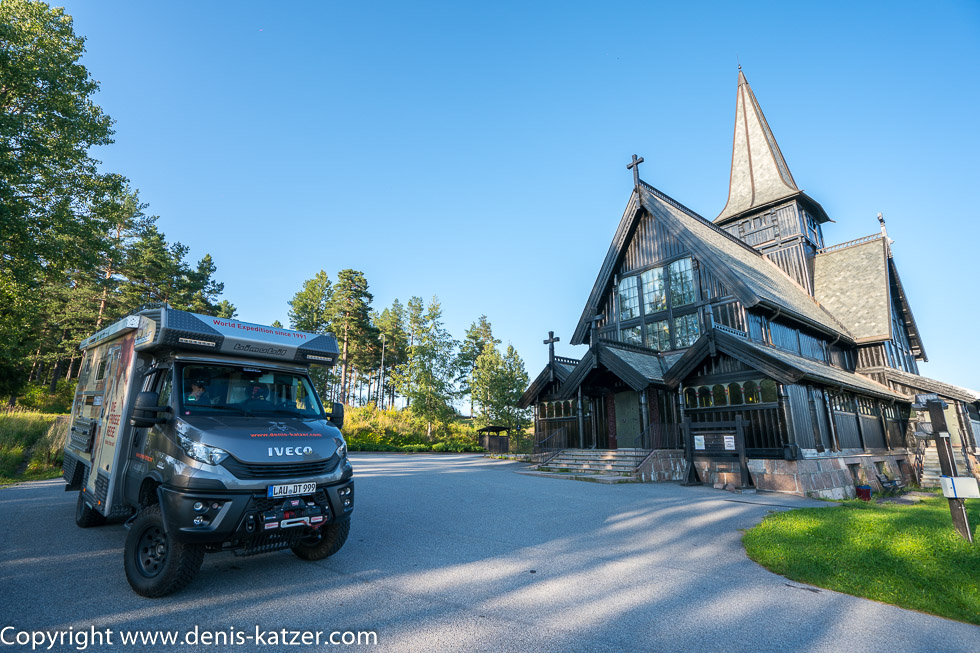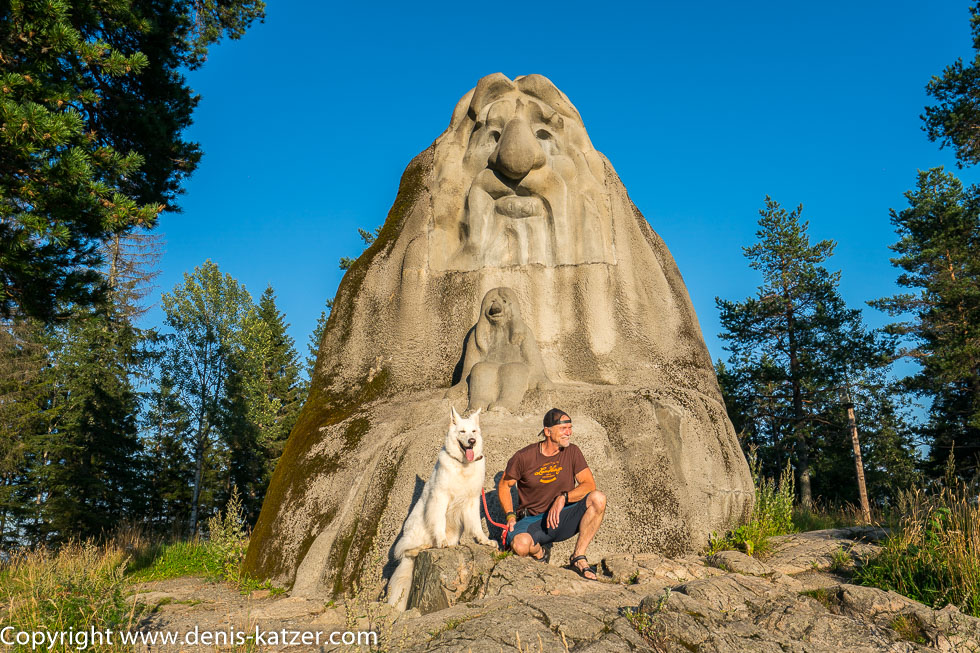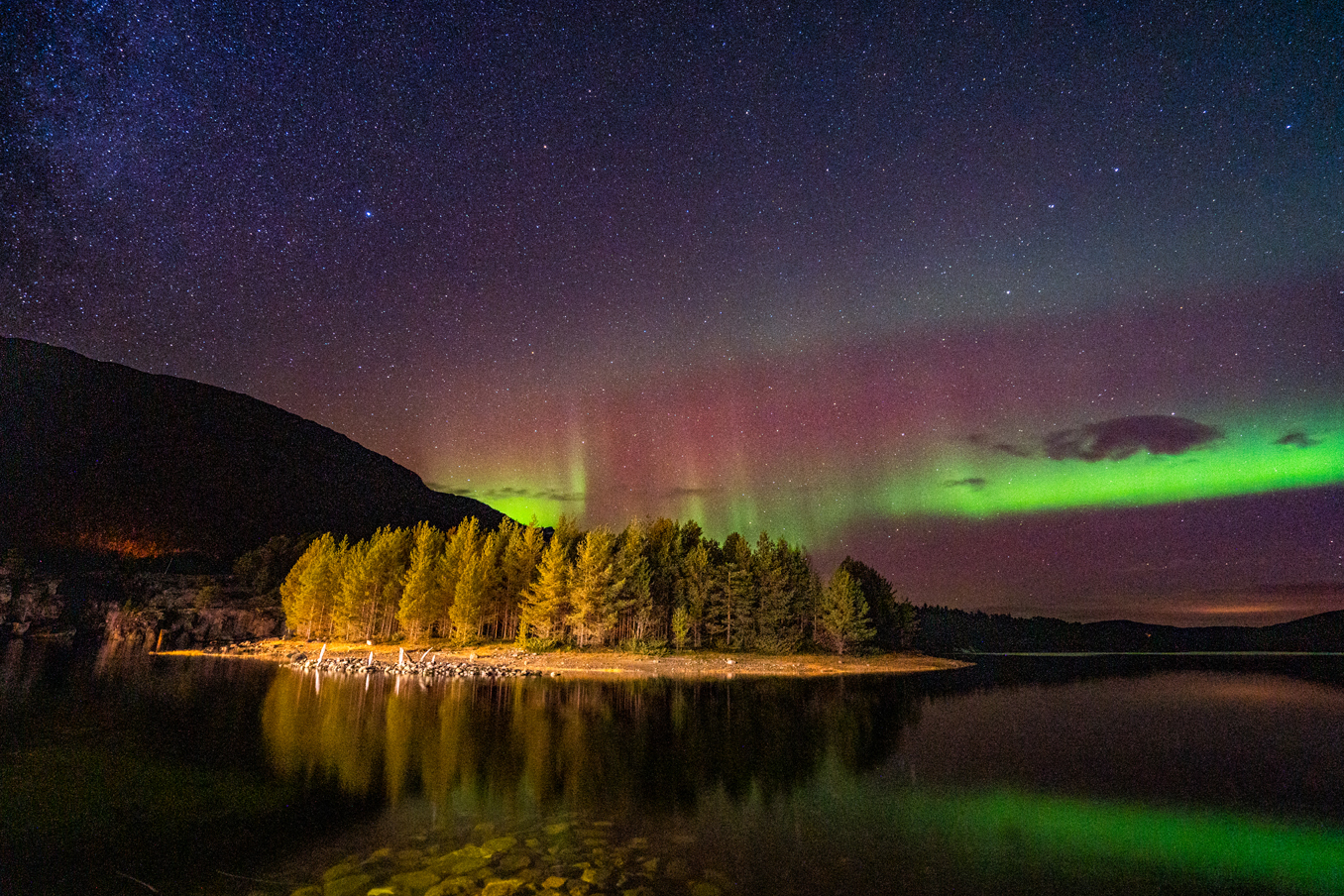
Hospitality and the oldest ski jump in the world
N 59°57'54.0'' E 010°40'21.5''
Date: 14.08.2020
Day: 012
Country:
Norway
Location:
Oslo
Daily kilometers:
112 km
Total kilometers:
1641 km
Soil condition:
Asphalt / unpaved path
Sunrise:
05:25
Sunset:
21:19
Temperature day max:
25°
Temperature day min:
15°
Departure:
12:00 p.m.
Arrival time:
7:30 pm
(Photos of the diary entry can be found at the end of the text).
Click here for the podcast!
Click here for the podcast! (continuation of this article)
Link to the current itinerary
After a wonderfully pleasant night in the Norwegian forest, we soon enjoy fresh fruit, various tasty nuts, psyllium seeds and a few spoonfuls of muesli with cottage cheese and soy milk every morning. “Fantastic”, I say, fully aware of what a gift it is to be able to dine like this. During the last 30 years of our travels, we have seen a lot of misery. Many people in the slums of India, who live from hand to mouth, often earn no more than one dollar a month and are always on the verge of starvation. I look out of the window at the idyllic-looking Lake Vansjø, at the small plastic boats with outboard motors that the privileged Norwegians use to go fishing and think of my first expeditions to the indigenous peoples of the world and how I myself suffered from hunger because we had packed too little and the wrong food out of inexperience. Taking a sip of hot, sweetened milk tea, I think of the many deserts we crossed with our camels. How Tanja and I suffered from constant thirst and were on the verge of dying of thirst at one time or another. And now we are sitting in such an incredibly luxurious vehicle that protects us from all weathers. In which we store 200 liters of drinking water, making us independent of any tap for a long time. And if we should unexpectedly run out of water again, we have a filter system with a pump with which we can draw the liquid elixir of life from any lake or puddle. “It’s just great here,” I say, motivated by my thoughts. “What’s great?” Tanja wants to know. “Well, here in our Terra.” “Yes, I’m grateful every day too. I don’t think I’ll ever stop being happy about it,” she says. “What do you think about visiting the bear hunter Per Jørgen in his farmhouse outside Oslo?” I change the subject. “If you like, we can go there. We have time.”
As I walk around the Terra Love again before setting off to check that every window and stowage flap is closed, another vehicle stops next to us. “I have a weekend cottage at the end of the road,” says the driver, marveling at the expedition vehicle. We are just talking about the lake, the delicious wild berries and mushrooms that can be found here when Per Jørgen passes us again. “Will you come and see me before you leave for Oslo?” he asks kindly. “Absolutely,” I reply. “See you then!” he calls out of the open window of his car and drives off.
Just a few kilometers further on, we reach a clearing covered in fresh, lush green grass at the end of the path. It arches over a slight hill on which a few beautiful wooden houses stand. At the rear of the main building, the slope falls away slightly and ends at a fjord. The entire huge lawn is freshly mowed. In the middle of the green area is a flower bed bordered by round rocks. A tripod stands next to it on a natural rock slab. Below it hangs a fire bowl in which logs are waiting to be lit.
We get out of the Terra as Per comes towards us and greets us with a friendly smile. “Welcome to my farm,” he says. While we are talking, another man joins us. “This is Rolf. He has a weekend house right over there and was born and raised here on the farm,” Per introduces the 70-year-old former German teacher. Because Rolf likes to speak German, we now converse in a mixture of German and English. Rolf explains that Norway was occupied by the Danes from 1300 to 1814, by the Swedes until 1905 and by the Germans from 1940 to 1945. We talk about hunting and the fact that there are so many mushrooms in the forest this year. “I’ll be right back,” Per interrupts the conversation only to reappear a short time later with a frozen elk loin, which he hands to Tanja. “I hunted it myself. Enjoy yourselves.” “Thank you very much. We’ve never eaten elk meat before,” we say. “Before you go, you have to come and see me,” says Rolf. “But you can also stay here for a few days,” says Per. Because we don’t want to get stuck right at the beginning of our journey, we decline with thanks and say goodbye to the hospitable hunter and stop off at Rolf’s on the way back. His wife Sigrid is currently in the kitchen frying a large pot of chanterelles she has collected herself. “They taste delicious with moose loin,” she says with a friendly expression. “Do you have a container to keep them in?” “These are for us?” asks Tanja. “Yes, we have so many, we can hardly eat them ourselves.” We are amazed to be treated with such exceptional hospitality by people we have only just met. We pack the mushrooms for the elk loin in our little freezer compartment in the Terra and say goodbye to Sigrid and Rolf without a hug because of Corona. As we set off, they both wave after us until the forest has swallowed us up.
Shortly before we leave the forest path, I enter the coordinates of the capital Oslo, which is about 100 kilometers from here. “On to the next adventure,” I say in full anticipation, although I am aware that there is hardly any adventure to be had in a Norwegian capital. On Per’s recommendation, we take the country road. “You’ll see much more of the beautiful landscape,” he said.
In the late afternoon, we drive into the summer capital of Norway. Despite Corona, all pubs, street restaurants and gardens are full this Friday. People enjoy everything that can be enjoyed and live life to the full. Since things are rather quiet in Germany due to the massive corona restrictions, we are surprised by the massive, lively hustle and bustle. Hardly anyone here wears a mask. Everything seems to be going as if there is no pandemic. The city makes a relaxed, spacious impression on us and the traffic in this metropolis of almost 700,000 inhabitants is quite relaxed despite the rush hour.
“There you see it. That’s the most famous and oldest ski jump in the world, whose smaller predecessors were built at the end of the 1900s,” I say. “Where?” asks Tanja as we crush over a bridge in the middle of Olso. “Up there between the houses, a huge finger-like hook sticks up into the sky. Can you see it? That must be her,” I say.
The navigation system guides us around the construction sites in the city towards Holmenkollen, a region after which the ski jump is named. “Holmenkollen, a strange name,” says Tanja. “From what I’ve read, a doctor called Ingebrigt Holm ran a hotel up there from 1889 and later a sanatorium. The mountain was allegedly named after him.
We wind up the mountain in tight hairpin bends until we suddenly find ourselves in front of the spectacular steel ski jump, the reconstruction of which began in 2009. Da deng! Da deng! Da deng! Biathletes train directly below us. They race up with their cross-country skis on wheels, take their rifle off their shoulder, take aim, shoot at the distant targets, shoulder their rifle and carry on hunting. Fascinated to see the biathletes training live, we look down from our position at the sports and training facility. Then we look for a place to spend the night right next to the complex with a view of the cosmopolitan city of Oslo. We look out of the window of the Terra Love at the increasingly flashing lights of the countless houses far below us and watch as they fight against the dying daylight to illuminate the inevitably dark night…
